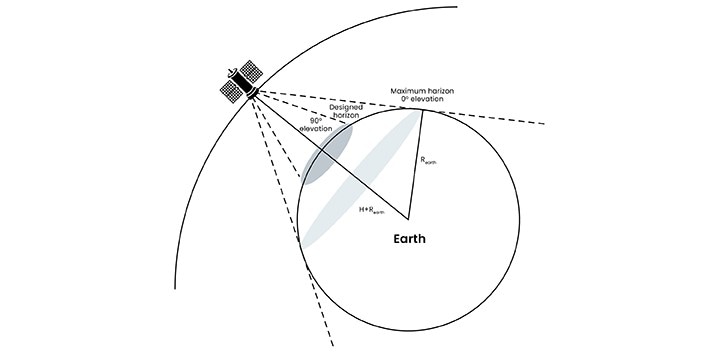Coming back from the yearly gathering at Mobile World Congress in Barcelona, Spain, I’d like to talk about a “hot” topic in
telecommunications: non-terrestrial networking (NTN). 5G NTN is a market where
NXP Layerscape processors
have been gaining quite a bit of traction lately.
So, what is this NTN-thing all about? Rest assured, it has nothing to do with
talking to aliens (just yet). Instead, NTN augments the existing (terrestrial) wireless telecommunication network (the one
operated by the likes of Verizon, Vodafone and China Mobile) with a satellite-based system. The primary purpose is to extend the
reach of wireless communications to truly span the Earth.
This concept is not a new one. Those of us that have a legacy from Motorola will remember the Iridium satellite constellation
that has provided mobile phone access from a satellite network since the early 2000s. The end-user benefits stem from the global
scope of satellite connectivity — no more limitations from country borders and local operators. However, Iridium was a bit ahead
of its time. Driven by technology limitations at the time, it ended up as a bulky and expensive niche application.
So why are things different now and could NTN become more successful? There are a few factors coming together. First, the cost
of satellite deployments is coming down dramatically as new, reusable satellites come to market. SpaceX is a very visible
company in this space with reusable technology that helps drive down cost. Once the barrier-to-entry is low enough, the market
opens for non-governmental players to enter. A second factor is the standardization of the air interface. One of the
differentiating factors of 5G is that the waveform is designed to be flexible, including support for non-terrestrial deployment.
This enables reuse of mass volume (terrestrial) technology for NTN use cases, including reuse of 5G ecosystem components,
interfaces and software stacks. This reduces complexity and timeline, and thus cost and risk. A third factor is market demand.
The unserved half of the world’s population accounts for both a huge market opportunity and a way to achieve government funding.

NTN is far from being uniform in functionality, architecture and implementation. This is driven by the wide range of target
applications:
Satellite networks are defined by the constellation type—which defines the configuration of the network with regards to the
distance between ground and satellite station. The choice of constellation type to be deployed involves striking a balance
between the required number of deployed satellites, cost per satellite, latency/throughput considerations and other factors.
Constellation types are defined by the distance between satellite and Earth, in GEO, MEO and LEO (and lesser-known HAPS and HEO)
options:
Note how LEO is an outlier here with regards to the combination of limited lifetime, good (real-time) performance and the need
for a large amount of satellites. This makes LEO systems particularly attractive for innovation, including “batch” deployments
using low-cost commercial space companies that have been coming online in the last few years.

With regards to standardization, NTN is gradually being standardized in the
3GPP consortium over time, with 3GPP Study Items in Releases 15 and 16.
3GPP Release 17 started normative work, focused on adapting the 3GPP stack
to support both broadband and IoT applications. Several aspects of the 3GPP
stack are subjected to optimization to tackle the unique aspects of space
deployment, including physical layer aspects like doppler shift and
propagation delay, high Round Trip Time (RTT), which impacts retransmission
algorithms and control plane signaling that needs to be enhanced to include
satellite information and support handovers for non-mobile UEs.
As an interesting point to NXP as a semiconductor component provider, space
is unique in how it stresses electrical components differently compared
to Earth. This stress comes in various shapes: thermal (extreme temperature
changes), vibration, radiation and more. Higher-orbit systems require what
is called “radiation hardened” (rad-hard) components because they are
outside of the Van Allen belts and exposed to a higher level of radiation.
This comes together with the expected lifespan. The satellite lifespan
increases with the distance of the satellite from the Earth – GEO
satellites have a typical lifespan of 15 years or more, while LEO
satellites are expected to remain useful for only half of this time. A
device that has a higher lifespan will obviously be exposed to a higher
level of radiation over this lifespan.
Driven by the various component stress factors, combined with required
component lifetime (these systems typically operate over 10 years or more),
the pool of “allowed” components for satellite systems is dramatically
reduced compared to what is used for consumer products on Earth. There are
vendors specialized in these types of components and/or subsystems that are
“space-qualified”.

As you can see, these NTN systems present a unique set of challenges to the
system designed — system design complexities (dealing with doppler,
reliability, mesh network options, and so on), relatively low volumes
(thousands and not millions), limited component availability (need for
hardened components) and large capacity (up to 100s Gbps) all drive
engineering complexity. This engineering complexity intuitively drives a
modular design in which smaller subsystems can be instantiated multiple
times, because this allows engineering energy to be focused on optimization
of such a subsystem. And it’s exactly this modularity that allows an
ecosystem of smaller industry players to come online, where each company
optimizes a small aspect of the larger NTN system.
So why does NXP care about all of this? It turns out that the NTN market
has a pretty good commercial potential, when our components live not only
in the satellite itself, but also in the consumer terminal on Earth. The
programmable, flexible and open nature of many NXP products can help our
customers solve the unique problems that NTN exposes. Where do you think
the future of NTN will lead?